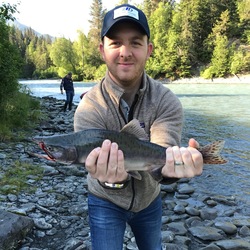Black Maple Hill Distilling Co.
Vine Hill Ranch
Baker & Hamilton Cabernet Sauvignon 2021

Christopher Tynan Wines
St.Helena Cabernet Sauvignon Reserve 2012
Parker 94 when it was released, its improved since then 🥩 recommended I was saving this until I found some more available, Tynan just released more of these one off 2012 today. This is a nice bottle 👍🏼. Not a fruit bomb pop & pour, I’ll take this over 3/4 of $100.00 bottles out there.
Winery notes-
It has an opaque inky black center with dark and deep ruby edges. A concentrated and layered perfume of cassis, smoked cardamom, black licorice, black fig, old cabinet, and chocolate ganache leap from the glass. The Petit Verdot lends crushed black pepper and incense aromas. This young wine is loaded with gobs of silky supportive tannin that build on the entry and carry all the way through to fleshy and gorgeous finish.
This wine is a "one-off" of sorts. Unfortunately, the vineyard was replanted soon after 2012, so I was only able to make one vintage. It's composed from a steep hillside block just 200 ft below the Meleagris Vineyard. Planted to Clone 6 and named Chiquito by its then owner and farmer, Cornelius Corbett, this steep east facing hillside is planted on deep rocky Aiken loam. The well-drained soils provide a perfect spot for growing Cabernet. A bit of Petit Verdot from the Stagecoach vineyard was co-fermented with the Cabernet to add a touch of richness and complexity. The Stagecoach Vineyard is across the valley atop the red clay and volcanic soils near Pritchard Hill. Together, the two varietals provide a synergistic layered darkness that is both brooding and inviting.
95% Cabernet Sauvignon
5% Petit Verdot
pH 3.85
Alcohol 14.4%
TA 5.2 g/L
124 Cases Produced
Unfined -- Unfiltered
— 5 years ago
Produttori del Barbaresco
Riserva Muncagota Barbaresco Nebbiolo 2019
From one of my favorite co-ops. I believe they are still the third largest co-op in Europe. Their tasting room sits on the top of the hill in the center of Barbaresco under & to the side of the church with an easy downhill short walk to Gaja.
2019 was a very good vintage in Piedmont.
The nose shows some light smokiness and lightly grilled meats. Dullish fruits of; blackberries, dark cherries, poached strawberries, raspberries with notes of black raspberries. Sandstone, dark earth and dark withering flowers with red roses.
The palate is ripe, juicy and lush. Quite pleasant for a youthful Barbaresco. Blackberries, dark cherries, poached strawberries, black raspberries, raspberries & blueberry hues. Crushed sandstone & limestone, nice mid spice, dry tobacco, tough leatheriness, barrel shavings, soft presence mix of dry & fresh herbs, dry river stone, red cola, brilliant red florals, red & pink roses, excellent acidity with a nicely tensioned, structured, balanced, elegant finish that lasts minutes landing on wood & dry earth.
Another one to cellar 8-10 plus years. — 9 months ago


Bedrock Wine Co.
Old Hill Ranch Heritage Sonoma Valley Red Blend 2020
The 2020 Old Hill Heritage Wine shows why this site is considered one of the very best in all of Sonoma. The pedigree is evident. A wine of volume, textural depth and intensity, the 2020 is a showstopper. Black cherry, chocolate, licorice and dark spice lend tons of complexity to this statuesque Zinfandel-based field blend. All the elements come together so beautifully. It's hard to fully capture the Old Hill with words, as it really transcends descriptors. But when you taste it, you know. You know you are tasting a wine from a very special place. (Antonio Galloni, Vinous, January 2022)
— 3 years ago
Sinegal Estate
Reserve Cabernet Sauvignon Blend 2016
Of the Napa wines I tasted over 4 days on this trip, the 16 Sinegal Reserve & the 13 Seavey Cabernet were my favorites. Both great wines but, stylistically very different. The Seavy big and bold and the Sinegal pure beauty & elegance.
The nose reveals very dark currants. Dark & milk chocolate. Blackberries, creamy black raspberries, black plum & plum, mocha powder, core of anise, beautiful dark spice, soft volcanic soils, some dry brush and lavender, violets and fresh dark red florals.
The body is full. The tannins are really meaty but, exceptionally soft, fine and meaty. Lots of dark spice with plenty of heat. The mouthfeel is gorgeously sexy with feminine elegance. Dark & milk chocolate. Blackberries, creamy black raspberries, black plum & plum, mocha powder, core of anise, beautiful dark spice, big sweet tarry notes, soft volcanic soils, some dry brush, lavender, violets and fresh dark red florals. The acidity is perfect. The finish is well balanced sexy and gorgeous. The structure, tension say this needs to cellar eight to ten years.
Photos of; tasting cellar area, modern stainless tanks, outside terrace tasting and or dining area and their grounds and lake.
Producer history and notes...Sinegal Estate was founded in 2013 with wines made from their 30 acre Inglewood estate in St Helena (not to be confused with the Inglenook Estate in Rutherford). This is not a new property, it was part of an original land grant and its more modern day history dates back to 1879 when owner Alton Williams purchased the property and planted the first vines in 1881.
The property has changed owners a number of times over the decades. At one point the Jaegers’ owned the estate, Bill Jaeger and his wife Lila lived here. These Napa Valley pioneers were in part responsible for helping establish Freemark Abbey and Rutherford Hill. Lila was also a gardener and established beautiful gardens on the property.
Owners, David (father)and James (son) Sinegal purchased the property in 2013. James was the co-founder of Costco and once CEO. David worked at Costco for 21 years.
After the purchase, David divided each of their vineyards into smaller blocks, picking selectively (30 times in 2013) rather than all at once, and adding technology to the vineyards so they have up to the date reports on a number of data points including temperatures, soil moisture and various barometric pressures. If they want to selectively water, say vine #67 in row number three, they can do so with their irrigation system. Extremely efficient!
Nine acres of vines are planted to various red varietals including; Cabernet Sauvignon, Cabernet Franc, Malbec and Petit Verdot. They have some of the older Cabernet Franc vines in the valley that are 30+ years old.
The soils here are diverse and can vary even within small geographic ranges on the property. Some of their vineyards are planted on the valley floor – while their upper vineyards are hillside, on the edges of the Mayacamas Mountains.
Their landscape above the property is interesting and part of the Mayacamas Mountains. Visually, it appears drier than other parts of this mountain range and the vegetation reflects that with grey pine and more open natural vegetation rather than the thicker wooded vegetation more commonly associated with parts of Spring and Diamond Mountains to the north.
After purchasing the property, David created planned and laid out his vision to create a world-class boutique wine making operation. Many wineries in the Napa Valley can take years before they come to fruition, not so here. After only about 10 months, the existing winery was remodeled. 6,500 feet of caves were expanded and drilled into the hillside behind the winery and a new hospitality center was built. The hospitality center ties in very well with the winery. From the small tasting room, large doors open revealing the tanks.
A vegetable garden slightly under an acre grows just south of the winery building. Vegetables from this garden are sold to nearby restaurants.
A skeleton key appears on the labels of their wine and is prominently displayed on the outside of their winery building. This has historical significance. The original key opens the front door to the historic home on site and is displayed in the tasting room. With respect to the history of this property, this one key has already become iconic to the brand.
You only need to look inside of the winery to see that their wine making team is focused on quality. Each of the small lot tanks have built in pumps which can be controlled and programmed to do pump-overs anytime of the day or night. In addition, these tanks have multiple points at which the temperature can be controlled. These tanks do not necessarily handle all their fermentation’s. They also ferment small lots in puncheons and barrels as needed. Control across the board is the key here and it is the control of the details in wine making that is is so integral from when the fruit first arrives through to when it is bottled.
2013 was their inaugural release. The focus is currently on two primary varietals, Sauvignon Blanc and Cabernet Sauvignon. The 2013 Sauvignon Blanc were sourced from the estate but, then it was determined it was growing in an area better suited for red varietals so it was torn up and new plantings were made in the back of the property. While not far from these original plantings, their new home for their Sauvignon Blanc features different soils and is growing in a cooler part of the property.
The wine making team has been experimenting with the style of this varietal since 2013 with subsequent vintages seeing more oak. Especially, using the slightly longer cigar shaped barrels , which have extra surface area for maximizing complexities including textural feel imparted from aging the wine on the lees in these particular barrels. Maceration on the red wines is often 8-10 days and sometimes up to 20 days.
Most of their sales are direct to visitors or through their mailing list. However, they do have some distribution outside California in Florida, New York and Washington. Primarily to restaurants. — 7 years ago


Bedrock Wine Co.
Nervo Ranch Heritage Alexander Valley Red Blend 2021
Yes I know this is way too early but I really wanted to see where this was. From a very old “mixed black” vineyard on a hill of decomposing slate loam. With an hour of air it’s showing deep, low-toned berry fruit, cracked stones, and a little warm gravel. Structured and very old world on the palate, it’s got a youthful wall of tannin guarding it right now, but there’s nice flavor density underneath and no hint of jamminess or residual sugar. Stow it for 3-5 years at least. But it will be really good. 9.2+ — 2 years ago
Château Lagrange
Saint-Julien Red Bordeaux Blend 2000
2000 | Red Blend
(65% Cabernet Sauvignon / 28% Merlot / 7% Petit Verdot)
Château Lagrange
Grand Cru Classé (3ème), Left Bank
Bordeaux; Médoc, St-Julien, France
(93-94; Drink 2030-40)
Ripe black currant, damp leather, pencil lead, raspberry-fig bar; Dried black cherry, chocolate espresso cake, faint vanilla. Decanted 10H.
Paired with long braised (local, Columbia Co. NY ❤️) lamb shanks, charred carrots w/ maple glaze and garden mashed potatoes. A great 2023 Easter dinner, BDX is the best pairing for lamb, of many preparation styles.
(We're finding that the cats also enjoy a savory lamb dish. 😉) — 2 years ago
Cirq
Bootlegger's Hill Pinot Noir 2015
My last bottle of Cirq. I think the quality is extremely high, but the evolution and secondary market is hard to justify when similar priced wines (ex: Marcassin) are in a different realm.
This straddles bright and moderately lean Sonoma coast Pinot with ripe OR style pinot. When compared to Michael Browne’s Kosta Browne wines, its got a more elegant profile while retaining the rich fruit. Plenty of ripe cherry, black cherry, potpourri, and sandalwood aromatics. The palate here retains a lot of freshness to go along with the spiced rhubarb, black pepper, and maple drizzled black cherries. Acidity is very vibrant and keeps this wine afloat.
Pretty? Yes. Do I see this getting better? Not necessarily, just different. — 3 years ago

Blanton's Distilling Co.
The Original Single Barrel Kentucky Straight Bourbon Whiskey
Black tea, marzipan, Madagascar vanilla, suede leather, butterscotch, turbinado syrup. maintains an oiliness and weight on the palate without any ethyl alcohol burn. For many the archetype of single barrels. — 8 years ago








Somm David T
Independent Sommelier/Wine Educator
My first wine after a two-month hiatus. I ended up buying a case of this in increments at Costco for a price not even close to what I’ve seen anywhere else for their 2021. Since I think highly of this producer and the vintage, I didn’t bat an eye acquiring w/o tasting first. Also, I was aware that every major wine critic gave the 2021 VHR flagship Cabernet a score of 98 w/ Lisa @ TWI a 💯.
Only coravined a glass & let it stand for 30-40 minutes and consumed over the next half-hour detailing my notes.
Baker & Hamilton is the other or second wine of VHR depending on how you see it. If you didn’t know this was another or second wine, you would never know it. Both bottling's come front the same vineyard in Oakville.
When I first put the glass to my nose, I almost thought for a few seconds & wanted to say that’s Coombsville it’s that dark & brooding, but make no mistake it’s Oakville fruit.
The nose is full & brooding. Dark currants & cassis and inky as is the color. Candied violets leap out of the glass. Ripe rich; blackberries, black raspberries, black plum and dark cherries wrapped in dark chocolate. Sandalwood, sweet tarriness, fresh tobacco, crushed limestone, volcanics, dark spices with aromatic heat, clove oil w/ withering dark flowers, sweet lavender & endless lift of candied, lush violets.
The body is full, lush, ripe & brooding. It drinks rather well for such a young wine baring a bit of alcohol throat burn. 14.8% ABV. Cellaring time will tame it. The 21 is a two decade and more wine. It needs 7-8 years to integrate everything in this full & packed Cabernet. Lush, ripe; blackberries (almost pie), black raspberries, dark cherries, black plum & raspberries around the edges. Melted dark chocolate, anise into black licorice, dark spices w/ heat, clove oil, nutmeg, cinnamon stick hovers, vanillin, fresh & dry tobacco, dry top soil with limestone mixed in, crushed rock & stone, strong sandalwood to cedar, light rain on clay, dry herbs-bay leaf & a hint of ground sage, notes of iron pan, dark withering flowers, lavender & candied violets for days, round acidity-maybe a bit to high for today’s consumption, huge length & structure, not quite in balance but it will get there, well made/knitted with a full elegant finish that lasts minutes & lands on spice & earthiness. It’s a huge wine that will end up adding two points as it evolves & integrates.
A few things about the producer & this wine. 100% Cabernet Sauvignon from the Vine Hill Ranch Vineyard aged 23 months in French oak, 85% of which was new. Most of the Vine Hill Ranch fruit from 71-acre Oakville vineyard is sold off. What they keep, 40% of that fruit goes into their VHR flagship wine and 60% makes the Baker & Hamilton. The label of Baker & Hamilton is an homage to the hardware and agricultural implements of the company co-founded by third-generation grape grower Bruce Phillips’ great, great grandfather R.M. Hamilton, who emigrated from Scotland to California in 1849 hoping to make his fortune in gold.
Photo’s of, VHR vineyard, Bruce Phillips-Managing Partner and Winemaker-Francoise Peschon. — 5 months ago